ناموجود

HPV genotypes 14 High Risk Quant Real-TM , sacace-100 t
58,762,318 تومان 48,968,599 تومان
HPV genotypes 21 High & Low Risk Quant Real-TM -96t
Sacace™ HPV genotypes 21 Real-TM Quant ver. 01.09.2020 For in Vitro Diagnostic Use HPV Genotypes 21 Real-TM Quant HANDBOOK Real Time PCR kit for identification, typing and quantification of Human Papillomavirus types low-risk (HPV 6, 11, 44) and high- risk (HPV 16, 18, 26, 31, 33, 35, 39, 45, 51, 52, 53, 56, 58, 59, 66, 68, 73, 82) V21-100 FRT 96 REF Sacace™ HPV genotypes 21 Real-TM Quant ver. 01.09.2020 NAME HPV genotypes 21 Real-TM Quant INTRODUCTION Genital infection with HPV is one of the most common sexually transmitted diseases (STDs) of viral etiology worldwide (20% – 46% in different countries in sexually active young women). About 30 from more than 120 currently known types of HPV can infect the epithelium of the urogenital tract. By the ability to cause cancer of the epithelium, they are figuratively divided into 2 groups – high and low oncogenic risk. The HPV types 16, 18, 31, 33, 35, 39, 45, 51, 52, 56, 58, 59, 66, 68, 73, 82 belong to the group of high oncogenic risk. Type 16 is the most common in Europe and is detected in more than 50% of all cervical cancers. The HPV types 6, 11, 36, 42, 43, 44, 46, 47, 50 belong to the group of low oncogenic risk. Infection caused by these types usually proceeds as benign lesions of the cervix and larynx condylomata. Several methods have been used to diagnose clinical or subclinical infection with HPVs including clinical observation, cytological screening by Pap smear, electron microscopy, immunocytochemistry, but these methods have some disadvantages such as non-standardization and subjectivity, insufficient sensitivity and low predictable value. The most perspective way of HPV diagnosis is a direct detection of DNA of the human papilloma virus of high carcinogenic risk by the polymerase chain reaction. While the value of the Pap smear in routine screening for cervical dysplasia is undisputed, it is now known that 99% of cases of cervical carcinoma are caused by infection with twelve genotypes of the human papilloma virus (HPV). Identification of these high-risk genotypes is very valuable in the management of cervical carcinoma, both as a prognostic indicator and as a secondary screening test where results of a Pap smear are inconclusive. Results from the combination of the Pap smear and the HPV DNA test can aid in determining the intervals for screening. The PCR-based methods have been used successfully for the detection and typing of genital HPV genotypes in clinical specimens such as cervical swabs or scrapes, cervicovaginal lavages, frozen biopsies and formalin-fixed paraffin-embedded tissues. INTENDED USE The kit HPV genotypes 21 Real-TM Quant is an in vitro Real Time amplification test for identification, typing and quantification of low-risk (HPV 6, 11, 44) and high- risk (HPV 16, 18, 26, 31, 33, 35, 39, 45, 51, 52, 53, 56, 58, 59, 66, 68, 73, 82) regarding to their oncogenic properties human papillomavirus DNA. Sacace™ HPV genotypes 21 Real-TM Quant ver. 01.09.2020 PRINCIPLE OF ASSAY The kit HPV genotypes 21 Real-TM Quant is based on amplification of a target DNA sequence. DNA molecules are heat denatured while the cyclic amplification program proceeds. Target-specific primers bind to the denatured DNA templates in the presence of dNTP’s, and Taq-polymerase. Taqpolymerase extends the primers thus providing the synthesis of complementary DNA chains and amplification of target DNA sequence. To increase the specificity and sensitivity of reaction, a paraffin layer separates the PCR-mix and Taq-polymerase. It hampers the admixture of PCR components at low temperatures, thus providing a “hot-start” feature, which prevents unspecific PCR. Real-time PCR technology is based on measurement of fluorescence at every cycle of reaction. The PCR-mix contains target-specific hydrolyzing probes bearing reporter and quencher molecules. While the probe is intact, these molecules are close enough to provide effective quenching. Once hybridized to a target sequence, the probe is hydrolyzed by Taq-polymerase. Thereby reporter and quencher become separated and fluorescence increases proportionally to target sequence amplification. The intensity of fluorescence is analyzed with a Real-time PCR instrument data collection unit and the software provided. The PCR-mix includes the Internal control (IC), which is intended to monitor the quality the efficiency of the polymerase chain reaction. Channel HEX is used to detect IC PCR tube number 8 contains a PCR-mix for the amplification of human genomic DNA (sample intake control (SIC)). The SIC allows to exclude preanalytical error. If the amount of collected material is insufficient for the analysis, it is necessary to repeat sampling procedure. Channel FAM is used to detect the SIC. PCR tube number 8 contains additional probe for detection of “Marker” by using the Rox dye. It tags the strip orientation. Upon completion of the run, software defines actual position of the strip (by means of “marker” position) relative to the position preset by the operator. If it mismatches, the software suggests rearrangement of the tubes by default. In accordance with the operator, order can be rearranged and saved in new file. The fluorescent dyes are assigned to individual types of sequences. The FAM, ROX and Cy5 dyes are used to detect specific sequences. The HEX dye is used to detect IC (see table 1 for the reference). The FAM dye is also used for SIC detection. Use of several distinguishable dyes allows detection of several PCR products simultaneously in one tube. The quantification of HPV DNA is possible by 2 types of analysis: absolute and relative. Absolute analysis involves software calculation of the virus copies number based on the value of the threshold cycle (Ct, Cp) after amplification. Relative analysis involves normalizing the virus DNA amount to the amount of human genomic DNA (SIC) in a given sample (i.e., the number of human cells in the sample). It allows to consider for the sampling variance. Clinically significant virus concentration is at least 103 copies of HPV DNA per 105 human cells (with correct material sampling). This value characterizes the high infection level and can lead to the development of cervical neoplasia. Therefore, software restriction of the obtained virus concentration values is used during data analysis if they do not fall within the clinically significant range. Sacace™ HPV genotypes 21 Real-TM Quant ver. 01.09.2020 Table 1: № of the tube Detection channel Buffer color Fam Hex Rox Cy5 1 HPV 31 type IC HPV 35 type HPV 16 type Blue* 2 HPV 52 type IC HPV 33 type HPV 68 type Colorless 3 HPV 45 type IC HPV 82 type HPV 51 type 4 HPV 6 type IC HPV 44 type HPV 11 type 5 HPV 18 type IC HPV 39 type HPV 58 type 6 HPV 66 type IC HPV 26 type HPV 53 type 7 HPV 59 type IC HPV 56 type HPV 73 type 8 SIC IC Marker – * insert the strip into the thermal block with the correct orientation: position 1 tube (blue color) must be on the top MATERIALS PROVIDED Module No.1: Real Time PCR kit (V21-100 FRT) “HPV genotypes 21 Real-TM Quant”: PCR-mix 21 paraffin sealed, 96 x 8-tubes strips (20 µL in each tube); Taq DNA Polymerase, 16 tubes x 500 µl; Positive control HPV genotypes 21, 4 tubes x 150 µl Cap strips, 96 x 8-caps strips Contains reagents for 96 tests Sacace™ HPV genotypes 21 Real-TM Quant ver. 01.09.2020 MATERIALS REQUIRED BUT NOT PROVIDED Zone 1: sample preparation: Biological cabinet Desktop microcentrifuge for “eppendorf” type tubes 65°C ± 2°C dry heat block Vortex mixer Pipettes with sterile, RNase-free filters tips 1,5 ml polypropylene sterile tubes Disposable gloves, powderless Tube racks Zone 2: Real Time amplification: Real Time Thermalcycler with 4 fluorescence channels Workstation Pipettes with sterile, RNase-free filters tips Tube racks STORAGE INSTRUCTIONS HPV genotypes 21 Real-TM Quant must be stored from +2 to +8 °C. The kit can be shipped at +2 to +8 °C for 3-4 days and should be stored at +2 to +8 °C immediately on receipt. STABILITY HPV genotypes 21 Real-TM Quant is stable up to the expiration date indicated on the kit label. The product will maintain performance through the control date printed on the label. Exposure to light, heat or humidity may affect the shelf life of some of the kit components and should be avoided. Repeated thawing and freezing of these reagents should be avoided, as this may reduce the sensitivity. Components stored under conditions other than those stated on the labels may not perform properly and may adversely affect the assay results. Sacace™ HPV genotypes 21 Real-TM Quant ver. 01.09.2020 WARNINGS AND PRECAUTIONS In Vitro Diagnostic Medical Device For In Vitro Diagnostic Use Only The user should always pay attention to the following: Use sterile pipette tips with aerosol barriers and use new tip for every procedure. Store extracted positive material (samples, controls and amplicons) away from all other reagents and add it to the reaction mix in aseparate area. Thaw all components thoroughly at room temperature before starting an assay. When thawed, mix the components and centrifuge briefly. Use disposable gloves, laboratory coats and eye protection when handling specimens and reagents. Thoroughly wash hands afterwards. Do not eat, drink, smoke, apply cosmetics, or handle contact lenses in laboratory work areas. Do not use a kit after its expiration date. Dispose of all specimens and unused reagents in accordance with local authorities’ regulations. Specimens should be considered potentially infectious and handled in a biological cabinet in accordance with appropriate biosafety practices. Clean and disinfect all sample or reagent spills using a disinfectant such as 0.5% sodium hypochlorite, or other suitable disinfectant. Avoid sample or reagent contact with the skin, eyes, and mucous membranes. If skin, eyes, or mucous membranes come into contact, rinse immediately with water and seek medical advice immediately. Material Safety Data Sheets (MSDS) are available on request. Use of this product should be limited to personnel trained in the techniques of DNA amplification. The laboratory process must be one-directional, it should begin in the Extraction Area and then move to the Amplification and Detection Areas. Do not return samples, equipment and reagents to the area in which the previous step was performed. Some components of this kit contain sodium azide as a preservative. Do not use metal tubing for reagent transfer. Sacace™ HPV genotypes 21 Real-TM Quant ver. 01.09.2020 SAMPLE COLLECTION, STORAGE AND TRANSPORT HPV genotypes 21 Real-TM Quant can analyze DNA extracted from: Cervical swabs: Remove excess mucus from the cervical os and surrounding ectocervix using a cotton or polyester swab. Discard this swab. Insert the Sampling Cervical Brush 1.0-1.5 centimeters into the cervical os until the largest bristles touch the ectocervix. Do not insert brush completely into the cervical canal. Rotate brush 3 full turns in a counterclockwise direction, remove from the canal. Insert brush into the nuclease-free 2,0 ml tube with 0,3 mL of Transport medium (Sacace). Vigorously agitate brush in medium for 15-20 sec. Snap off shaft at scored line, leaving brush end inside tube. Urethral swabs: Patient must not urinate within 1.5-2 hours prior to sampling procedure. The external urethral orifice must be treated with a swab moistened with sterile physiological saline solution just prior to the sampling procedure. In the case of purulent discharge, the sample must be taken 15-20 minutes after urinating. Carefully insert the swab into the woman’s urethra to a depth of 1-1.5 cm. A child’s sample must be taken from the external urethral orifice. Fluid Cytology (Thinprep PreservCyt®, CytoScreen™, BD SurePath™): Place cervical epithelial swab (endocervix) and superficial cervical swab (exocervix) into the tube with transport-fixation media. Working part of the probe is to be broken off and left in the tube with transport media. Biopsy material from mucosa. Prostate fluid: Before taking the prostate fluid, sexual abstinence is recommended for 3 days before the procedure. Before taking the prostate fluid, the penis balanus is treated with a sterile cotton tampon moistened with a physiological solution. The prostate fluid is collected after a prostate massage through the rectum. Massage is performed by a doctor, by means of vigorous pressing movement from the base to the top of the gland. After the end of the massage, the released prostate fluid in the form of a free flowing drop (0.15-1.0 ml) is collected in a 2 ml single dry sterile tube Ejaculate: Before collecting ejaculate (seminal fluid), sexual abstinence is recommended for 3 days before the examination. Before collecting the ejaculate, the patient urinates in the toilet, completely emptying the bladder. After urinating, the patient should wash his hands thoroughly with soap and hold the toilet of the external genitals with soap and water. The penis balanus and the foreskin should be dried with a sterile napkin. The ejaculate is obtained by masturbation and collected in a sterile container. Urine: Collect in a sterile container 20/30 ml of the first portion of morning urine. It is recommended to process samples immediately after collection. Store samples at 2–8 °C for no longer than 24 hours, or freeze at -20/-80°C. Transportation of clinical specimens must comply with country, federal, state and local regulations for the transport of etiologic agents. Sacace™ HPV genotypes 21 Real-TM Quant ver. 01.09.2020 DNA ISOLATION Any commercial RNA/DNA isolation kit, if IVD-CE validated for the specimen types indicated herein at the “SAMPLE COLLECTION, STORAGE AND TRANSPORT” paragraph, could be used. Sacace Biotechnologies recommends to use the following kits: Material DNA extraction kit REF Cervical Swabs SaMag STD DNA Extraction kit (to be used with automatic extraction system SaMag-12/24) SM007 DNA-sorb-A K-1-1/A/100 Fluid Cytology SaMag STD DNA Extraction kit (to be used with automatic extraction system SaMag-12/24) SM007 DNA-sorb-D K-1-8/100 Biopsy material from mucosa DNA-sorb-C K-1-6 Please carry out DNA extraction according to the manufacture’s instruction. A negative control sample should go through all stages of DNA extraction. Physiological saline solution can be used as a negative control sample with the volume according to DNA extraction kit used. REAGENT PREPARATION Protocol: 1. Take out from the refrigerator all the reagents. 2. Each strip of PCR-mix 21 paraffin sealed is required to test 1 clinical sample. Prepare the required number of strips, including N strips for N clinical samples, 1 strip for Positive Control Amplification (PCA) and 1 strip for Negative Extraction Control (C-). 3. Mix the Taq DNA Polymerase tube and add 10 µl into each tube of all the strips. Avoid to break out the paraffin layer. 4. Add 5.0 µl of extracted DNA from the clinical sample into the tubes of the corresponding strip. Avoid to break out the paraffin layer. 5. Add 5.0 µl of extracted Negative control of extraction into the tubes of the strip marked Negative Control of Extraction (C-). Avoid to break out the paraffin layer. 6. Add 5.0 µl of Positive control into the tubes of the strip marked Positive Control of Amplification (C+). Avoid to break out the paraffin layer. 7. Cap and spin down briefly (2-3 seconds) all the strips. 8. Transfer the tubes into the thermalcycler, insert the strips with the correct orientation (blue color tube on top) Amplification 1. Create a temperature profile on your instrument as follows: Step Temperature,°С min sec Number of cycles Fluorescenc e detection 1 80,0 0 30 1 94,0 1 30 2 94,0 0 30 5 64,0 0 15 √ 3 94,0 0 10 45 64,0 0 25 √ 4 94,0 0 5 1 For example, SaCycler-96™ (Sacace)* The fluorescence is detected on Fam, Joe/Hex, Rox and Cy5 channels. * For automated quantitative analysis you need to use SaCycler-96 software version 7.9 or higher, and the HPV-21 ini file (contact Sacace support to obtain them). Sacace™ HPV genotypes 21 Real-TM Quant ver. 01.09.2020 INSTRUMENT SETTINGS Instrument settings The threshold line should cross only sigmoid curves of signal accumulation of positive samples and should not cross the baseline; otherwise, the threshold level should be raised. Set the threshold at a level where fluorescence curves are linear and do not cross curves of the negative samples, approximately 10% of the fluorescence value in the last amplification cycle for the positive control of amplification. DATA ANALYSIS HPV genotypes 21 Real-TM Quant contains an artificial sequence of HPV genome as positive control sample obtained with genetic engineering techniques. The PCR-mix of the kit includes the Internal control (IC). IC is an artificial plasmid intended to assess the quality of PCR performance. The PCR-Mix contains Sample Intake Control (SIC). SIC is needed for sample quality assessment. When estimating the relative number of HPV, the SIC value is used for normalization. To assess possible contamination is required a negative control. A negative control sample should go through all stages of DNA extraction. Physiological saline solution can be used as a negative control sample with its volume according DNA extraction kit used. The test result is considered valid when: Positive result for the specific product is shown, in such case the internal control is not taken into account. In the presence of HPV DNA in the test sample, the absolute quantity of this virus type (the degree of concentration common logarithm, number of copies of the HPV DNA per sample) will be specified in the line with the name of this type of HPV in the “Quantitative” field (absolute analysis). Negative result for the specific product while the internal control must be amplified. The test result is considered invalid when: SIC value must be considered when analyzing results: SIC values lower than 4.0 should be considered as due to an insufficient amount of sample, and the sampling procedure must be repeated. If positive control (C+) doesn’t show positive result, it is necessary to repeat the whole test. It may be caused by inhibitors, operation error or following to improper storage and handling requirements. If negative control (C-) has positive result for the specific product, whole tests of current batch is considered invalid. Decontamination is required. Sacace™ HPV genotypes 21 Real-TM Quant ver. 01.09.2020 Quantitative analysis (only for SaCycler-96)* The software analyzes data automatically. Software is provided together with SaCycler-96 (Sacace Biotechnologies). Upon completion of the run, the software compares actual position of the strip with the real position of the marker (by mean of ROX dye position) relative to position predefined by the operator. If there is a mismatch, the software warns the operator about it. Operator can either to rearrange the data obtained from each tube in right positions manually or to repeat the analysis of the given sample with the correct tubes order. SIC value must be considered when analyzing results: SIC values lower than 4.0 should be considered as due to an insufficient amount of sample and the sampling procedure must be repeated. In the presence of HPV DNA in the test sample, the absolute quantity of this virus type (the degree of concentration common logarithm, number of copies of the HPV DNA per sample) will be specified in the line with the name of this type of HPV in the “Quantitative” field (absolute analysis). The software specifies only a clinically significant virus concentration by default (more than 103 copies of HPV DNA per sample (with correct sampling)). This virus concentration characterizes a high infection rate, which can lead to the development of cervical neoplasia. For samples with a lower concentration, the program fixes a negative result. The software restriction of the virus concentration can be removed by the user or replaced with another value and type of analysis. The amount of HPV DNA indicated in the “Relative” field will be normalized to the number of human cells in the test sample. By default, normalizing is performed to a single cell. Sacace™ HPV genotypes 21 Real-TM Quant ver. 01.09.2020 If needed, the user can change the normalization parameter. To do this, click the “Change parameters of data analysis” button , in the opened window click the “Additional settings” button, then select the “Additional adjustment” tab: The data obtained with relative type of analysis allows one to monitor the dynamics of the viral load changes during treatment, and also to carry out a comparative analysis of the different samples. The result of the total HPV load calculating for each sample is shown in a specialized report. In the “Qualitative” field (qualitative analysis), if it is carried out, only the presence or absence of HPV DNA in the sample is indicated. In the absence of specific HPV signal and IC signal the program fixes unreliable result. It is necessary to repeat the analysis for the given sample. An unreliable result may be due to the presence of inhibitors in the DNA preparation; incorrect implementation of the analysis protocol, violation of the amplification temperature regime, etc. In this case, it is necessary to repeat PCR amplification, or DNA isolation and PCR, or sampling procedure for the given patient (performed sequentially). For positive control samples, the program fixes a positive result. When negative results are obtained, all results of corresponding experiment should be considered as false. All samples must be reanalyzed. For negative control samples, the program fixes a negative result. When positive results are obtained, all results of the corresponding experiment should be considered as false and the PCR laboratory must be decontaminated. * Quantitative analysis can be only performed on SaCycler-96. For automated quantitative analysis you need to use SaCycler-96 software version 7.9 or higher, and the HPV-21 ini file (contact Sacace support to obtain them). Sacace™ HPV genotypes 21 Real-TM Quant ver. 01.09.2020 Hex channel – IC human DNA Rox channel – HPV 35, 33, 82, 44, 39, 26, 56 DNA Cy5 channel – HPV 16, 68, 51, 11, 58, 53, 73 DNA PERFORMANCE CHARACTERISTICS Analytical sensitivity The kit HPV genotypes 21 Real-TM Quant allows to detect Human Papillomavirus DNA in 100% of the tests with a sensitivity of detection 5 or more copies of purified pathogens DNA per PCR reaction (103 copies/ml DNA sample). The HPV copies’ number was determined by Poisson analysis. The kit HPV genotypes 21 Real-TM Quant is able to detect one CFU of the pathogen per PCR reaction. This analytical sensitivity was determined by serially diluting pathogens infected cultures in culture transport media. Samples of each dilution were processed and tested by standard procedures. Each of the replicates containing 1 CFU per amplification reaction gave a strong positive signal. The analytical sensitivity will depend on the type of biomaterial, DNA extraction kit, starting sample volume and the final elution volume. The claimed sensitivity is achieved only when biomaterial pretreatment is carried out in accordance with the section SAMPLE COLLECTION, STORAGE AND TRANSPORT. Analytical specificity The analytical specificity of the primers and probes was validated with negative samples. They did not generate any signal with the specific Human Papillomavirus primers and probes. The specificity of the kit HPV genotypes 21 Real-TM Quant was 100%. The potential crossreactivity of the kit was tested against the group control. It was not observed any crossreactivity with other pathogens. Tested pathogens were Neisseria gonorrhoeae, Chlamidia trachomatis, Gardnerella vaginalis, Mycoplasma genitalium, Trichomonas vaginalis, Atopobium vaginae, Ureaplasma sp., Mycoplasma hominis, Ureaplasma parvum, Cytomegalovirus, Streptococcus agalactiae, HSV I, HSV II, EBV, Varicella-Zoster virus, Streptococcus pyogenes, Candida. Diagnostic characteristics Number of samples (n) – 191; Diagnostic sensitivity (95% CI) – 99.3% (96.7-100%); Diagnostic specificity (95% CI) – 99.9% (99.8-99.9%). Fam channel – HPV 31, 52, 45, 6, 18, 66, 59 DNA Sacace™ HPV genotypes 21 Real-TM Quant ver. 01.09.2020 KEY TO SYMBOLS USED * SaCycler™ is a registered trademark of Sacace Biotechnologies Sacace Biotechnologies Srl via Scalabrini, 44 – 22100 – Como – Italy Tel +390314892927 Fax +390314492493 mail: info@sacace.com web: www.sacace.com List Number Caution! Lot Number Contains sufficient for tests For in Vitro Diagnostic Use Version Store at NCA Negative Control of Amplification Manufacturer C– Negative control of Extraction Consult instructions for use C+ Positive Control of Amplification Expiration Date IC Internal Control
حمل و نقل کالا
درخواست محصول
.فقط مشتریانی که این محصول را خریداری کرده اند و وارد سیستم شده اند میتوانند برای این محصول دیدگاه(نظر) ارسال کنند.
محصولات پیشنهادی
Cinna Clone-DNA Extraction Solution (DNG – plus) 20ml-EX6081
امتیاز 0 از 5



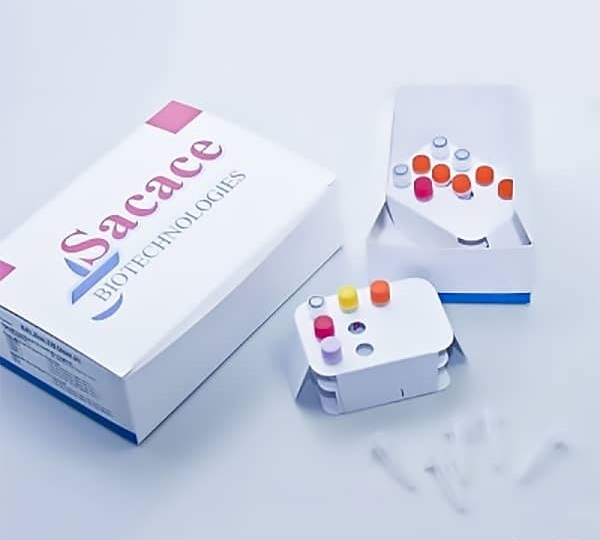




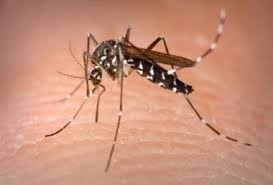

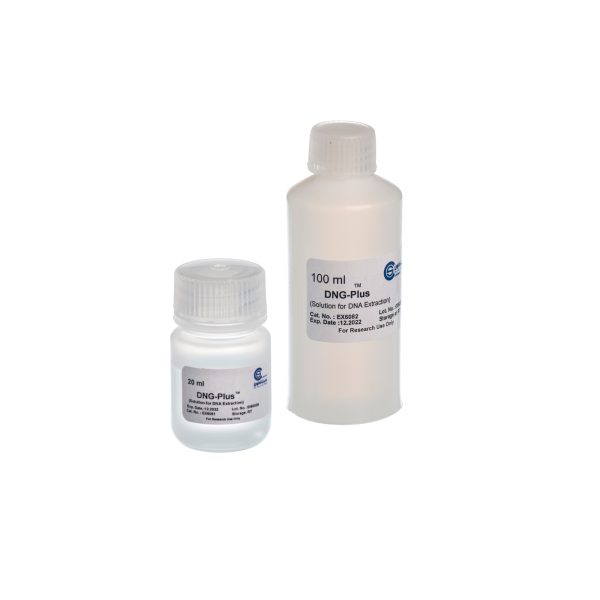
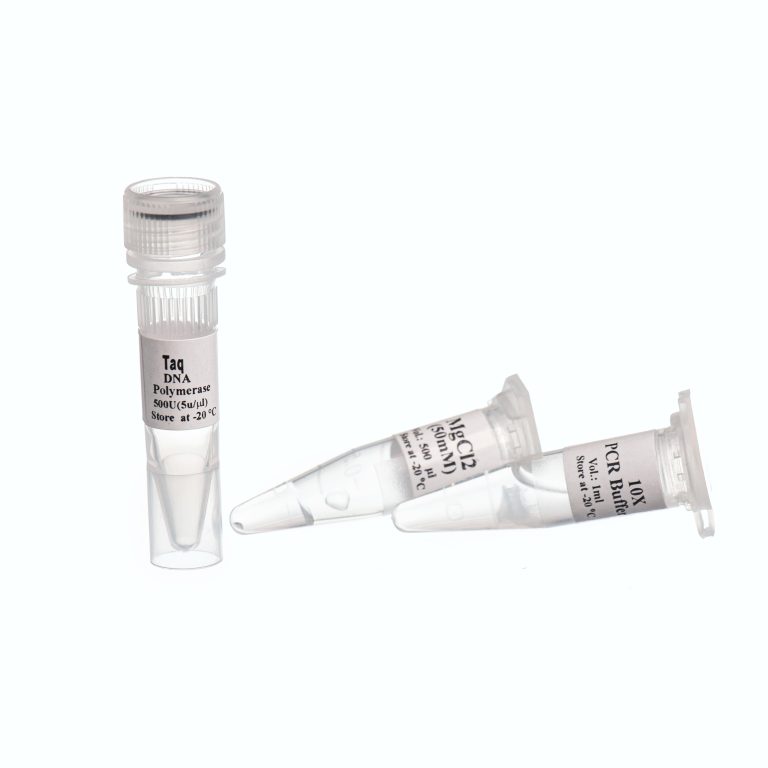
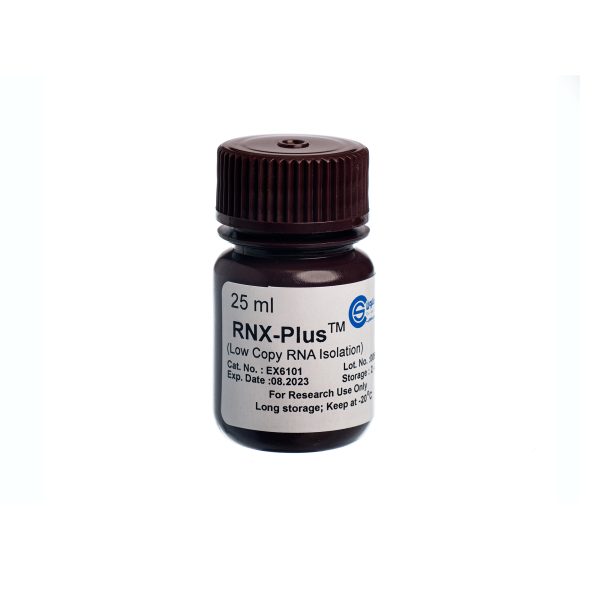
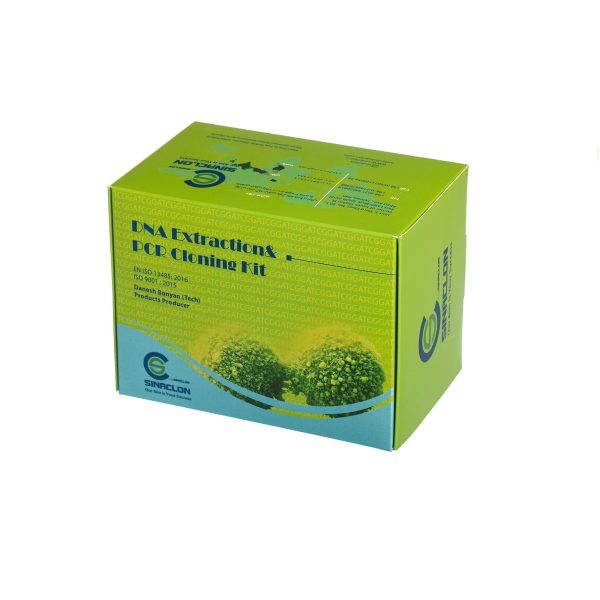


نقد و بررسیها
هنوز بررسیای ثبت نشده است.